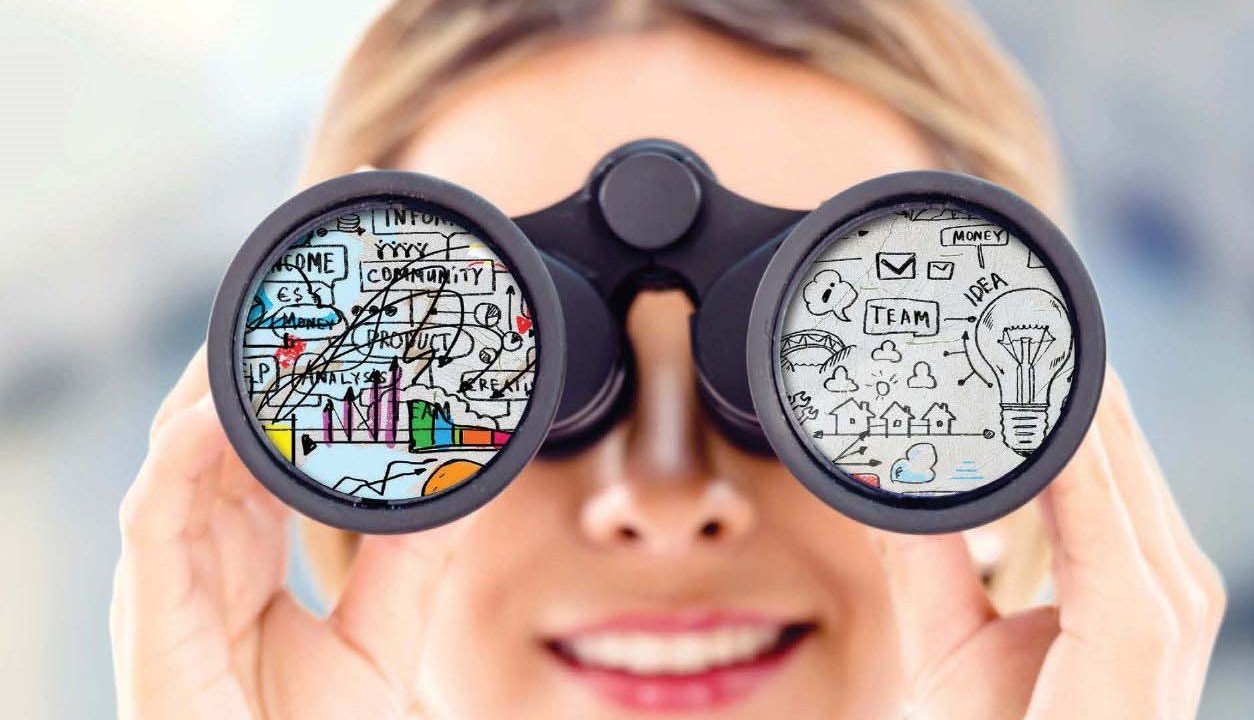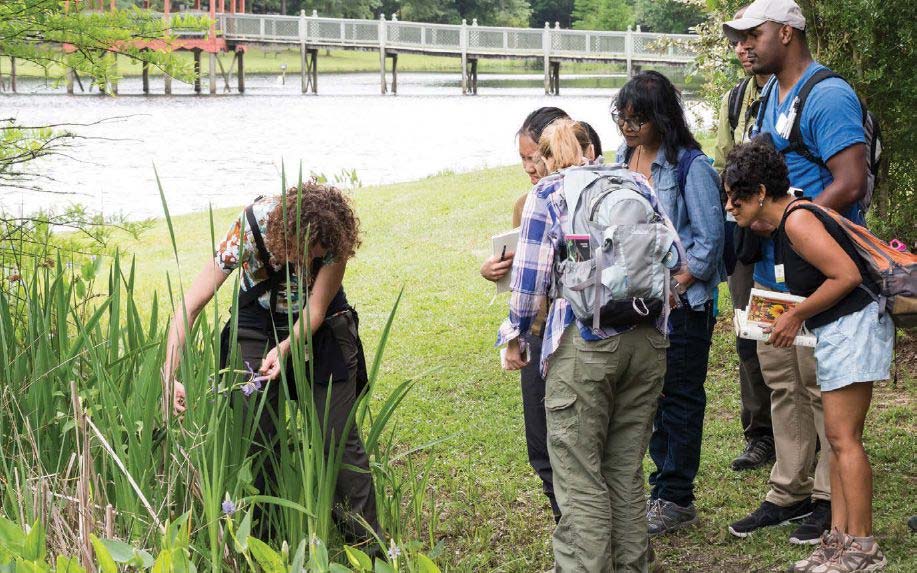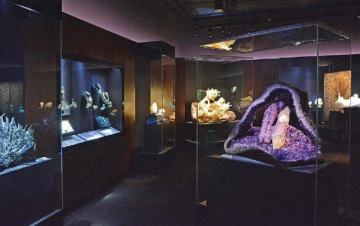
This article originally appeared in the May/June 2017 issue of Museum magazine.
Last December, I co-taught a workshop in the Yale Peabody Museum of Natural History’s newly renovated David Friend Hall, surrounded by a gorgeous exhibit of gems and minerals. Some two dozen museum professionals had assembled to brainstorm sustainable models for research resources in FutureProofing Natural History Collections, a workshop organized by the Peabody, the Ecological Society of America (ESA), and AAM. I was not blind to the irony of the setting. Surrounded by a collection with what I am sure is a very, very high price tag, we were encouraging attendees to explore how to monetize the value of their collections in almost any way possible-except putting them up for sale.
The workshop was funded by the National Science Foundation. In our proposal, my collaborators and I took an entrepreneurial approach to sustainability, outlining an agenda that encouraged participants to develop a variety of new business models in the context of long-term trends shaping society, in order to secure the future of natural history museums and collections. It’s clear that the needs surrounding research collections already exceed available government support, and as collections grow and add new dimensions to their work, those needs will grow as well. As that statement is true for collections of all types, and for museums generally, I believe the approach the Alliance and its partners are pioneering through this workshop will be of wide-ranging benefit to our field.
I leapt on the opportunity to collaborate with ESA and the Peabody Museum because the topic is a great fit with my current focus at the Alliance: helping museums re-balance their income streams and find new sources of support The Center for the Future of Museums launched at the beginning of the 2008 financial crisis. I spent a lot of time in those first years studying the trends destabilizing museum finances: government support (primarily state and local, with a soupcon of federal); earned income (e.g., admissions, memberships, facilities rental, food, and merchandise); philanthropy (individual and foundation support); and for museums lucky enough to have an endowment, a modest draw on that fund. While the United States has rebounded from the crisis, that recovery has been marked by a fundamental restructuring of our economy which has reshaped nonprofit economics as well.
The Unraveling of the Traditional Museum Financial Model
Government support for museums, waning over the past four decades, declined dramatically after 2008, as states and municipalities scrambled to adjust to their own reduced circumstances. Many localities have not only reduced their funding for arts and culture, but also are aggressively seeking income from nonprofits, for example through payments in lieu of taxes, fees, or, most recently, legislation that requires nonprofits to pay property taxes or that removes tax-exempt status entirely.
Museums face increasing competition for earned income from a variety of sources. People, on average, now spend half their leisure time watching TV. (This trend is accelerated by the fact that now we can access digital content anytime, anywhere via Internet-connected personal devices.) The general erosion of status accorded to authority. in this wiki-enabled, crowd-sourced age, may also contribute to the declining consumption of traditional culture (museums, classical music, opera) documented in the National Endowment for the Arts periodic Survey on Public Participation in the Arts. While that survey shows that people do indeed still enjoy music, dance, and the visual arts, much of their time and attention has shifted to nontraditional formats and venues. Even museum programming faces competition, as companies such as Museum Hack and Museum Sage build their own income streams around museum resources.

students through an ecosystem In Louisiana.
Competition for philanthropic dollars continues to grow as well As the number of nonprofit organizations in the US soars, the growth of social nonprofits outstrips the increase in museums. In this competitive climate, social nonprofits hold the charitable high ground. Many prominent philanthropists- most notably Bill Gates, who has already given away more than $28 billion-are influenced by the doctrine of effective altruism, as preached by Princeton professor Peter Singer. Singer argues that donors have an ethical obligation to do the most good they can with their charity. In this framework. giving to an art museum is a morally repugnant act. as that money could have been used to cure river blindness instead (That is an actual example that Singer has used in his speaking and writing and Gates has repeated it in public appearances.)
Many younger philanthropists who have made their money in the tech sector engage in impact-based philanthropy; Coming from a metrics-based work culture, these donors expect organizations they fund to measure and report on the change they’ve made in the world. Such rigorous accountability poses a challenge for museums. The good that individual museums do is often squishy and hard to measure, and our sector lacks solid data on the impact of museums overall.
These specific challenges aside, I am watching a development that may disrupt the very core of nonprofits’ fiscal and legal identities: the rise of hybrid organizations that combine the idealism of nonprofits with the financial independence of for-profits. One such hybrid legal structure is the Benefit Corporation, a for-profit company that is legally obligated to deliver a return both on financial investments and on a self-declared mission that delivers a public good. This structure tries to have the best of both worlds. Hybrid organizations are empowered to make mission-driven decisions that may compromise profits. Their robust earned income buffers them from the fickleness of foundation funding, while their corporate legal structure frees them from what many regard as a dysfunctional model of nonprofit governance.
The first Benefit Corporation legislation was passed in Maryland in 2010, and now similar legislation exists in 31 US states and the District of Columbia. (Similar systems are being introduced in Italy and Australia.) An independent nonprofit called B Lab has certified more than 1,600 companies in 42 countries as so-called B-corps, using a LEED-like system that scores organizations on their governance practices and on their effect on workers, the community. and the environment. Many companies that have earned B-corps status are legally organized as Benefit Corporations, but the certification is available to for-profit and nonprofit organizations as well.
Most Benefit Corporations operate firmly in the commercial realm. but with a nonprofit twist. Possibly the most well-known is Ben & Jerry’s, the ice cream company famously devoted to ecologically responsible sourcing of ingredients and socially progressive causes. (In 2016, the company created a new flavor-Bernie’s Yearning-to show support for Vermonter Bernie Sanders’ presidential campaign.) Some B-corps, however, are beginning to operate in a museum-like space. One such organization is Biomimicry 3.8, a for-profit certified B-corp in the process of becoming a Benefit Corporation. ‘This company’s mission is training, connecting, and equipping a global network of biomimicry leaders to transform the world by emulating nature’s forms, processes, and systems to create more sustainable design. “Our vision,” the company’s change statement reads, ‘”is for humans and all of our neighboring species to thrive in a world empowered by nature’s genius;” Sounds very much like a museum mission statement, yes? Biomimicry 3.8 funds its work by providing innovation services to organizations and companies around the world, through a suite of professional training programs. and through a speakers bureau that reaches thousands of people each year.
What This Means for Museums
The emergence of Benefit Corporations may impact the museum sector in several ways. First, these for-profit entities are beginning to tackle problems formerly left to nonprofit, charitable institutions including education for under-served populations, hunger, poverty, and elder care. As they show measurable results, they both raise the bar for nonprofits (in terms of metrics), and undermine the perception that organizations that provide a social good need charitable support in order to succeed. Secondly. they’ve cracked the thorny nut of raising capital nonprofits, including museums, are perpetually hampered by an inability to raise the capital needed to launch or scale ambitious programs or services. By tapping into “social impact investment” money, Benefit Corporations can leverage funds to deliver on their missions. Indeed, the long-term goal in creating this legal hybrid is to grow an asset class for impact investing, creating the kind of massed investment opportunities that could leverage real money. such as from 401(k) plans, to accomplish social good.
None of this is to say that the museum of the future is going to be a Benefit Corporation, an L3C (low-profit limited liability company), or any other for-profit/nonprofit hybrid-though some might! But the existence of these mission-driven, profitable entities does challenge museums to up their game. That’s exactly the challenge my co-instructors and I presented to participants at the FutureProofing workshop. James Chung of Reach Advisors primed our thinking with lessons from large for-profit companies. Some, like Borders and Blockbuster, have failed because their business models did not keep up with market forces. Both became stuck on particular methods of delivering value (books, videos) that were outstripped by e-commerce and digital platforms.
By contrast, General Electric thrived by pivoting from manufacturing to providing data-driven solutions. In the field of transportation, Chung pointed out, GE realized the real value they could capture lay not in building a better train, but in figuring out how to get existing trains to run more efficiently. In a rapidly changing and unpredictable environment, the success of for-profits and nonprofits alike lies in flexibility, adaptability, and the willingness to question assumptions about the core value they provide.
Mapping the Value of Collections

fealures over 150 of the world·s premier mineral and gem
specimens Including this amethyst geode from Uruguav
(foreground}.
All too often, conversations about the value of natural history research collections simply rehash old formulas: What did it cost to create a collection? What would it cost to create comparable resources today? While these formulas are useful for some calculations {notably; determining insurance values), they don’t feed into an equation that yields income to maintain collections.
To avoid this pitfall, Emily Graslie of the Field Museum and Chris Norris from the Peabody Museum led the group in brainstorming new ways of mapping value. The resulting classification system was based on the nature of the financial relationship built around value. Support can be transactional. in which a buyer receives value for money (for example, consultancy services). Then there are third-party transactional relationships, in which a person or organization pays for a value that someone else receives, such as the government providing a grant to support activities that benefit society. In some kinds of philanthropic support, the funder supports the creation of value that aligns with their own goals.
The bulk of the workshop was devoted to brainstorming new business ventures that could be created around these kinds of support Participants broke into business teams, each working with a fictional case study of a research collection with realistic challenges related to staffing politics, and the economy. One case, for example, described an entomology collection at a state-run agricultural station Another focused on a collection of astrophysical data at a large natural history collection. Each team created a plan for a new income stream directly based on the collections or collection’s infrastructure (staff expertise, facilities).
The workshop culminated with the teams competitively pitching their ideas to the workshop organizers, who acted as a panel of judges. The teams came up with some creative solutions! The entomology collection team proposed to provide consulting services to local farmers based on remote monitoring and data analysis. (For a double win, this would also provide data relevant to the collection’s own research.) The team assigned to the astrophysics collection sketched a plan to license digital data to filmmakers and game designers for use in realistic virtual worlds.
During the workshop, participants created fictional solutions for fictional collections, but the process they used to generate ideas for new ventures is a methodology that can be applied at their own institutions. As the Alliance conducts this exploration with groups from museums of all kinds, we will build a portfolio of ideas, any one of which might be the nucleus of a new venture in the real world In five years’ time, if I read about a project like Biomimicry
3.8, I won’t be at all surprised to learn that it’s a new venture started by a museum.
Elizabeth Merritt is founding director of the Center for the Future of Museums at the American Alliance of Museums, and AAM vice president. strategic foresight. Merritt’s conference keynotes, workshops. and museum engagements encompass strategic foresight in general with a particular focus on creating new income streams for museums. She can be reached at emerritt@aam-us.org.








